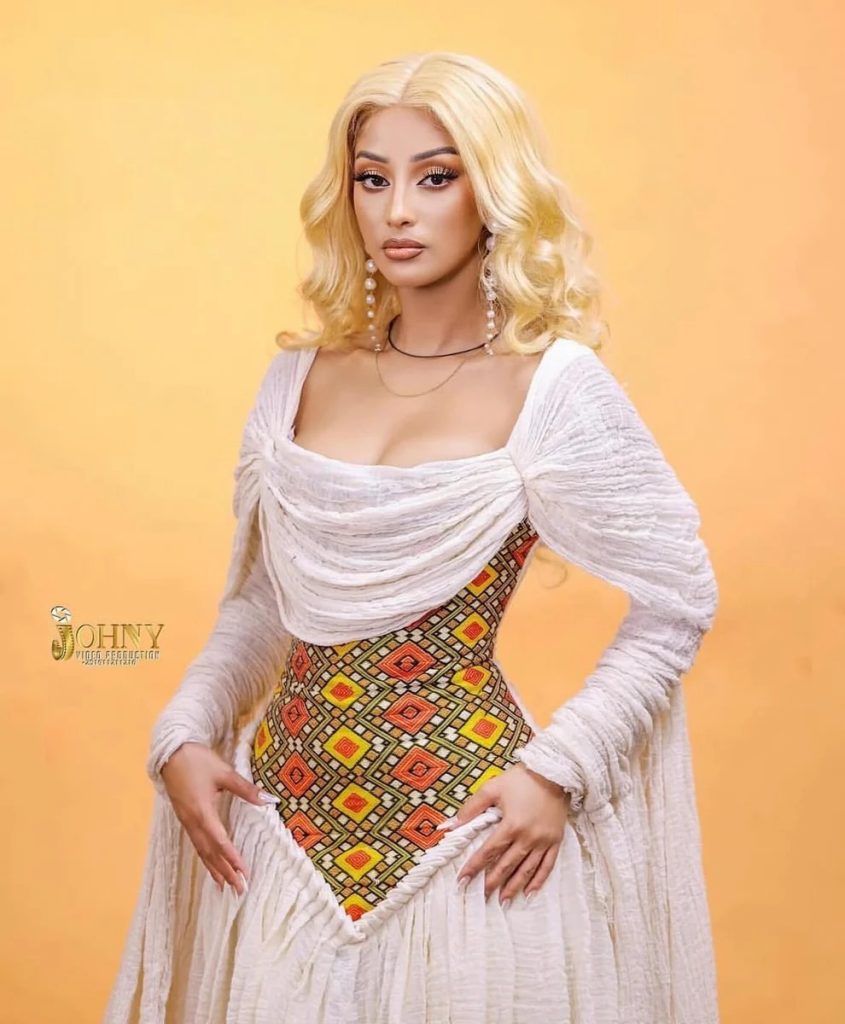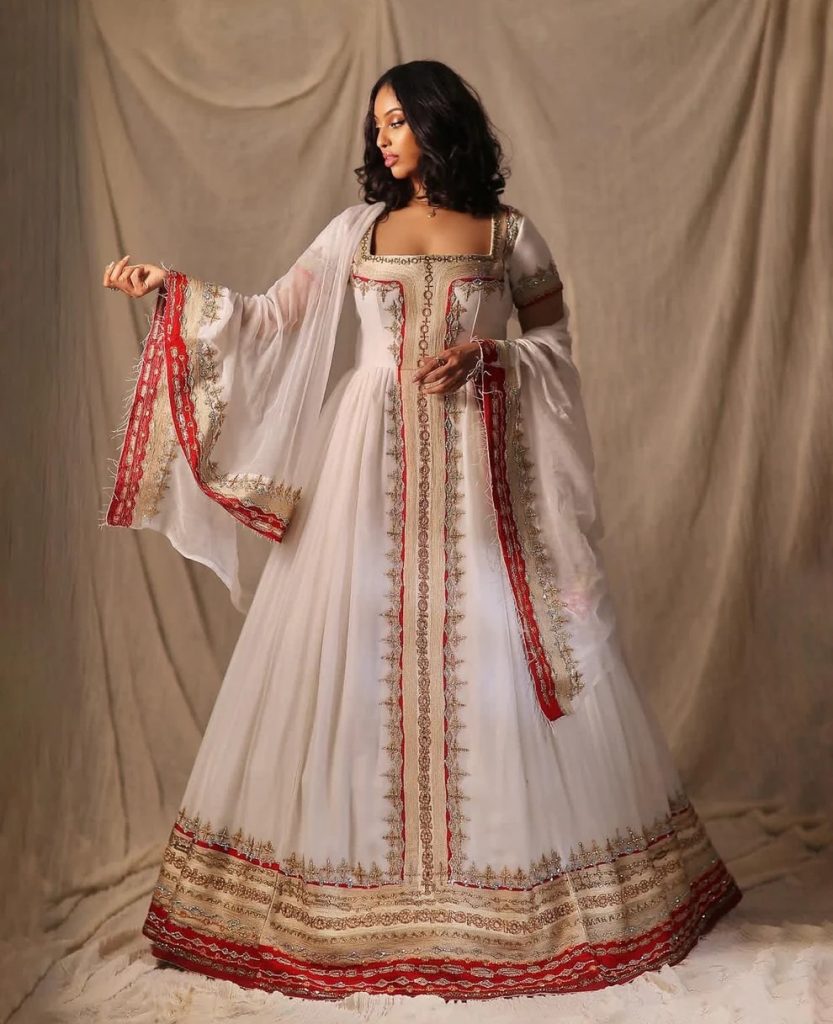Modern Habesha Dress Trends: Blending Tradition with Contemporary Fashion
Fashion is always evolving, but cultural dress traditions carry a weight that goes far beyond seasonal trends. In Ethiopia and Eritrea, one of the most recognisable cultural garments is the Ethiopian traditional dress, often known as the Habesha dress or Habesha kemis. This elegant attire has long been a symbol of heritage and identity, worn proudly at weddings, holidays, and cultural events.
Today, the Habesha dress is undergoing a transformation. Designers are blending traditional weaving, embroidery, and symbolism with contemporary cuts, colours, and fabrics. The result is a growing fashion movement where the Ethiopian dress is not just reserved for cultural ceremonies, but also embraced on runways and in everyday style.
In this article, we explore the journey of the Habesha dress, its cultural roots, and how it is being redefined for modern times while staying true to tradition.
The Cultural Significance of the Ethiopian Traditional Dress
The Ethiopian traditional dress holds a central place in both Ethiopian and Eritrean culture. More than clothing, it reflects history, craftsmanship, and identity. Traditionally, these dresses are made from shemma, a handwoven cotton fabric produced on looms by skilled artisans.
Women’s dresses, often called Habesha kemis, are typically white or cream in colour with embroidered borders known as tibeb. These embroidery patterns vary by region and carry cultural meaning. Men traditionally wear jodhpurs or white trousers paired with a long tunic and sometimes a shemma or netela scarf draped over the shoulders.

Ethiopian traditional clothing for men with a modern twist
Historically, the Habesha dress was reserved for important occasions such as weddings, church ceremonies, or national holidays. Its value comes not only from the fabric itself but also from the time-consuming craft of weaving and embroidery, skills passed down through generations. This cultural heritage of handweaving is recognised internationally, even featured on UNESCO’s intangible cultural heritage list.
For both Ethiopians and Eritreans, wearing the Habesha dress is an act of cultural pride. Even today, it signifies respect for tradition, family, and shared identity.
Defining the Habesha Dress and Habesha Kemis
To fully understand the modern transformation, it helps to know the distinctions within the tradition. The terms Ethiopian dress, Eritrean dress, and Habesha dress are often used interchangeably, but they each have specific cultural contexts.
- Habesha dress / Habesha kemis: Typically refers to the white cotton dress worn by women, with embroidered borders and often paired with a netela.
- Ethiopian dress: Broader term that includes both men’s and women’s traditional attire in Ethiopia, reflecting regional variations.
- Eritrean dress: Similar in form and tradition but may feature different embroidery styles, colours, and accessories specific to Eritrean culture.
What unites them is the reliance on handwoven fabric and the aesthetic of elegance through simplicity. Despite regional differences, these garments share a common cultural thread that makes them easily identifiable as East African attire.
Modern Habesha Dress Trends
In recent years, designers have begun to reinterpret the Ethiopian traditional dress through a contemporary lens. This shift is driven by younger generations who want to celebrate heritage but also express individuality.
Some of the most noticeable modern trends include:
- Experimentation with Colours: While the classic Habesha dress is white or cream, modern designs now incorporate bold hues like royal blue, emerald green, or burgundy while keeping the signature embroidery.
- Innovative Embroidery Patterns: Traditional tibeb designs are being reinvented with geometric shapes, metallic threads, and fusion motifs that blend cultural patterns with modern art.
- New Silhouettes: Designers are introducing fitted bodices, flared skirts, off-shoulder cuts, and even jumpsuits inspired by the Habesha kemis. These styles appeal to a global audience while staying rooted in Ethiopian aesthetics.
- Fusion with Western Fashion: Habesha-inspired dresses now appear in runway shows in Europe and North America. Designers often merge Habesha fabrics with modern tailoring to create versatile outfits.
These updates do not diminish the value of the traditional dress. Instead, they demonstrate how culture can evolve without losing its identity.
Ethiopian Traditional Dress in Global Fashion
The influence of the Ethiopian traditional dress has crossed borders. Members of the Ethiopian and Eritrean diaspora, particularly in the US, Canada, and Europe, continue to wear Habesha dresses proudly at weddings and cultural festivals. This visibility has helped introduce the attire to wider global audiences.
African fashion is also gaining recognition internationally, with designers from Ethiopia and Eritrea presenting their collections at global fashion weeks. The Habesha dress has appeared in music videos, fashion magazines, and even celebrity wardrobes. This crossover highlights the universal appeal of its elegance and craftsmanship.
The global embrace of African fashion trends has positioned the Habesha dress not just as cultural attire, but as part of a broader movement that values authenticity and heritage in contemporary style.

Modern Habesha dress inspired by classic Ethiopian kemis design
Weddings and Celebrations: The Habesha Dress Today
Weddings remain one of the most important occasions for the Habesha dress. Brides often wear elaborately embroidered Habesha kemis with gold accents, while grooms may wear a traditional white suit with a netela (ነጠላ) or cape-style wrap.
Modern brides are increasingly blending tradition with personal taste. For example, some commission dresses with both Habesha embroidery and modern bridal gown silhouettes. Engagement parties and holiday celebrations are also occasions where the Ethiopian dress is proudly showcased.
The significance of the Ethiopian traditional dress at weddings is twofold. It honours the cultural roots of the couple while also creating a visually stunning symbol of heritage for future generations.
Preserving Craftsmanship in a Modern Market
While the popularity of the Habesha dress is growing, there are concerns about sustainability and authenticity. Mass-produced imitations are often made with synthetic fabrics and machine embroidery, which undermines the value of handmade craft.
Supporting traditional weavers and artisans is critical to preserving the cultural integrity of the dress. Handwoven shemma (ሸማ) not only ensures quality but also sustains communities that rely on this craft. For many, choosing an authentic Habesha kemis is both a fashion decision and an act of cultural preservation.
The growing global conversation around sustainable fashion aligns well with Ethiopian and Eritrean traditions. Handwoven cotton is biodegradable, and traditional weaving practices inherently reduce waste compared to industrial methods. By investing in authentic garments, wearers contribute to a more ethical and sustainable fashion economy.
Styling the Habesha Dress in Contemporary Life
The Habesha dress is no longer limited to weddings or religious ceremonies. Younger generations are finding creative ways to style it for everyday wear.
Some pair a modern Habesha kemis with leather jackets or heels for a fusion look. Others wear embroidered tops with jeans or skirts, creating a casual but culturally rooted outfit. Accessories like statement jewellery or handbags add a contemporary twist while allowing the embroidery to remain the focal point.
Men are also embracing this shift by wearing Habesha-inspired shirts or tunics in more versatile ways. These adaptations make the Ethiopian dress more accessible in day-to-day life while keeping cultural pride intact.
Where to Find Authentic Ethiopian Traditional Dress
For those seeking authentic pieces, it is best to source directly from Ethiopian or Eritrean artisans. Local markets in Addis Ababa, Asmera, and other cultural hubs are home to talented weavers and designers. Increasingly, online platforms are making it easier to purchase authentic Ethiopian traditional dresses worldwide.
When buying, look for handwoven cotton, quality embroidery, and unique tibeb designs. These details signal authenticity and craftsmanship, distinguishing genuine Habesha dresses from mass-produced replicas. Supporting artisans not only ensures quality but also helps preserve the traditions behind the dress.

Modern Habesha dress blending Eritrean and Ethiopian styles
The Ethiopian traditional dress remains a powerful symbol of heritage, unity, and pride. From its origins in handwoven cotton and symbolic embroidery to its reinvention on global runways, the Habesha dress has proven timeless in its appeal.
Today’s trends show how tradition and modernity can coexist. The Habesha kemis and Eritrean dress continue to honour history while evolving to meet the tastes of a younger, global audience. For weddings, festivals, or everyday style, the Habesha dress carries meaning far deeper than fashion; it is a celebration of culture that connects generations.
As designers and wearers reimagine the Ethiopian dress, one truth remains: cultural fashion thrives when it is cherished, preserved, and passed on. The story of the Habesha dress is not just about clothing, but about identity, resilience, and beauty that transcends time.
